The 2021 season is over, and the Cardinals will turn their full attention to the planning for 2022. Questions abound, and I’ll be taking a look at each issue as we move deeper into the offseason.
Today: What Will The Cardinals Do At Shortstop?
They have multiple options. The Cardinals can stay with Paul DeJong and Edmundo Sosa. They can have them share the position. They can commit to one over the other. They can try to move DeJong in a trade; he’s set to make a guaranteed $15 million over the next two seasons. And if plans include slotting Nolan Gorman at second base at some point next season — don’t ask me when that will be — then Tommy Edman will relocate to shortstop.
It’s complicated.
Really complicated.
Of course, the Cardinals could spend large sums of money on a free-agent shortstop, making a bid from a diamond-studded group that includes Carlos Correa, Trevor Story, Corey Seager, Javy Baez and Marcus Semien. But does anyone realistically see that happening? I’m highly skeptical.
Just so you don’t get bogged down in my statistical mud, I’ll be using shorthand to put a number on offensive performance: park-and-league adjusted runs created, or wRC+. For this stat, just remember that the league average is 100. But I’ll just relay it to you by saying a hitter is 20 percent above league average, or 10 percent below average, etc.
OK? Good. Thank you.
How did the St. Louis shortstop position fare offensively in 2021? The answer: six percent below league average, which ranked 10th in the NL and 18th in the majors. That’s a little misleading because Sosa was a better hitter than DeJong. More on that later.
How did the STL shortstop position do defensively? Answer: outstanding. Cards shortstops No. 1 in the NL and third overall with 15 Defensive Runs Saved (DRS.) The breakdown: eight DRS for Sosa, six for DeJong, and one by Edman. Sosa saved two more runs than DeJong at shortstop despite playing 355 fewer innings than Pauly. No matter what the Cardinals choose to do at the position in 2022, it would be foolish to significantly weaken their shortstop defense and damage their overall run prevention.
Assessing DeJong: Over his first three seasons with the Cardinals he slugged .467 and was eight percent above league average offensively. Over the last two seasons DeJong had a poor onbase percentage (.295) an unimpressive slugging percentage (.378) and was 14 percent below average. His strikeout rate worsened to 27% this past season. DeJong missed a month due to a fractured rib. And while his offensive improved by nine percent after his June 12 return, the upturn wasn’t consistent or dramatic. DeJong had a good July (26% above average) but that was followed by a depressing final two months in which he hit 23 percent below league average. Contrary to the prevailing and tiresome perception, DeJong plays good defense at shortstop, with 36 DRS in his career. He wasn’t sharp in 2020, but his defense bounced back in 2021.
Key question about DeJong: Is his offensive decline irreversible? At age 28, can he raise his offense to previous levels? The anticipated bounce-back didn’t occur in 2021. If the problem hasn’t been fixed by now, then when?
Assessing Sosa: I think we can agree that he exceeded expectations in 2021. I touted him — but was surprised by how well he played as a rookie. Sosa was only four percent above league average offensively for the season, but that doesn’t tell us the complete story. When playing shortstop (68 games) Sosa was 24 percent above league average offensively. And when playing shortstop after the All-Star break, he produced offense at a rate of 45 percent above league average. That’s impressive. But … much of his success was shaped by batted-ball fortune. Sosa had a .326 average on balls in play; that was 34 points above the MLB average. During his two worst months offensively, June and July, Sosa had a .253 average on balls in play. (Another factor: Sosa’s playing time was cut back after DeJong came off the IL on June 12.) With lousy batted-ball luck, Sosa’s offensive dropped substantially over those two months. But he put together an excellent final two months, slugging .480 and performing 45 percent above league average overall. In 286 plate appearances as a starting player, Sosa batted .294 with a .795 OPS. That was elevated (here we go again) by a .349 average on balls in play.
Key question about Sosa: Did the Cardinals see enough to commit to Sosa as a starter? He had 326 plate appearances in 2021. That isn’t 500 or 600 PA, and his numbers were inflated by favorable batted-ball luck that you can’t depend on. In this context, former manager Mike Shildt could have helped the team — and Sosa’s cause — by playing him more frequently in 2021. Sosa started only two of the first 40 games, and got a chance to play only because of DeJong’s injury. For the season eight Cardinals had more plate appearances than Sosa. And Sosa had only 77 more plate appearances than Matt Carpenter in 2021.
What about Tommy Edman? Again, this is where it gets hazy and tricky. He’s done well when playing shortstop for the Cardinals, saving three runs in 111 innings. But it doesn’t make sense to project him as the shortstop unless we know, with certainty, that Gorman will enter the majors as a second baseman — and stay there. Gorman could be part of a DH platoon, batting against RH pitchers. But do the Cardinals really want to turn Gorman into a DH so early in his career, and curtail his development as a second baseman? As I said earlier: it’s so damn complicated.
OK, now it’s time to go to the thing that probably interests you the most:
Free-agent shortstops!
With the offseason clouded by the smoke of labor negotiations, it’s hard to say how the free-agent market will play out. Will top players be signed quickly, or will teams slow-play their decisions? Will the most coveted free-agent shortstops attract frantic bidding at huge prices, or will the market cool depending on the state of the labor battle?
I really don’t think the Cardinals will dive into this market, but I’ve been surprised before. But last year’s trade for Nolan Arenado was an aberration; the Cardinals didn’t have to part with any potentially elite talent and the Rockies picked up a sizable sum of money to help the Cardinals defray the cost of Arenado’s contract. Those dynamics aren’t in play now.
We know that the high-profile shortstops are good, or great. But they come with warning labels. I think it’s important to know that.
Corey Seager: his left-handed swing would enhance a STL offense that’s mediocre against RH pitching. But it’s not that simple, my friends. According to scouts that recently spoke with ESPN’s Buster Olney, the team that signs Seager should plan on moving him to third base in the near future. Seager has lost range at shortstop, costing the Dodgers four runs defensively over the last three seasons. And he’s a minus five in defensive runs saved for his career. Seager misses a lot of time. Excluding the pandemic-shortened 2020, he’s averaged only 85 games played over the last three full seasons, with a high of 134 games in 2019.
Carlos Correa: A first-rate defensive player who bats righthanded, hits for power, gets on base, and has no platoon weaknesses — meaning he’s equally effective against LH pitchers and RH pitchers. And he doesn’t need Houston’s ballpark to boost his offense. But beware of injuries; over the last four full MLB seasons he’s averaged 110 games per year — including 98 games per season from 2017 through 2019.
Javy Baez: is excellent defensively with 40 combined Defensive Runs Saved at shortstop over the last three seasons. He has a career .477 slugging percentage, but strikes out a bunch and walks infrequently. That explains a weak career OBP of .307. Here’s an important consideration: as presently composed, the Cardinals struggle against RH pitching. For his career Baez (who bats right) is five percent below average offensively against righthanders — and is 13% below average offensively vs. righties over the last three seasons.
Trevor Story: This righthanded hitter is very good defensively, with 15 Defensive Runs Saved over the last two seasons. But there are some questions over his offense. He’s slightly below average vs. RH pitching during his career, and was 16% below average against them in 2021. (An elbow injury may have been part of the problem.) Story is a fly-ball hitter; his FB rate of 44% over the last three seasons is fourth highest among MLB players that have at least 1,500 plate appearances over that time. And Busch Stadium is a tough yard for righthanded hitters that launch baseballs into the air. Just ask Arenado about that. In his first season with the Cardinals, Arenado had a .549 slug and 20 homers on the road — and a .435 slug and 14 homers at Busch. For his career, Story is 25 percent above average offensively at Coors Field, and two percent below average on the road.
Marcus Semien: Another righthanded hitter, Semien is highly regarded in the game as a character person, competitor and leader. Until 2021 Semien had never banged more than 33 homers in a season, but exploded for 45 home runs and a .538 slug this year for Toronto. But he’s 31, and his power numbers have been up and down through his career. And how would his power play at Busch Stadium? Semien had a 48% fly-ball rate in 2021. And he played 1,246 innings at second base for the Blue Jays last season — and only 134 innings at second base. He had a poor year at shortstop in 2020, costing Oakland six runs in 451 innings. At this stage of his career, Semien is best suited for second base. He saved 11 runs there for Toronto in 2021.
Conclusions? For whatever it’s worth, the Steamer Projections for 2022 have DeJong at three percent above average offensively, and Sosa at five percent below average. The Cardinals could stay the course with both guys, help their pitchers by maintaining top-level defense at short, and adjust during the season when Gorman arrives.
Sosa, DeJong and Edman can play multiple infield positions — a plus that could give manager Oliver Marmol lineup flexibility.
Unless the Cardinals throw down gold bricks and make a big splash at shortstop, I’m thinking they’ll likely stay with Sosa and DeJong at shortstop and eventually go with an Edman-Gorman platoon at second base. Gorman doesn’t hit LH pitching very well at all but crushed right handers in the minors. For his career Edman is 27 percent above average vs. lefties and 9% percent below average against RHP.
If the Cardinals want to move DeJong and can find a taker for his contract (good luck), it would open up the possibility of going in another direction at shortstop (via trade, or a lesser free agent) with Sosa remaining in place as a busy multi-position piece. I’d suggest a Sosa-DeJong platoon at shortstop, but both righthanded hitters are better against RHP than lefties.
This would be much simpler if we knew, with certainty, that Gorman was ready to plug in at second base and take about 450 at-bats for the Cardinals against righthanded pitching in 2022. That way the team could rely on a defense-first philosophy at shortstop, and that’s easy to put in place. It’s already there.
There’s no clean answer here at shortstop. It’s either the hazardous business of free-agent shopping in the most expensive aisle, or working with the existing puzzle that’s already on the table.
If offense is absolutely the top priority, the shortstop position provides an opportunity to upgrade by going big into free agency. The cost is likely to be exorbitant and will carry considerable risk. If defense is the No. 1 priority at shortstop, the Cardinals are set. If that’s their decision, the Cardinals must make sure to go big at DH. That’s the point of having a designated hitter, right?
Thanks for reading …
–Bernie
Bernie invites you to listen to his opinionated sports-talk show on 590-AM The Fan, KFNS. It airs Monday through Thursday from 3-6 p.m. and Friday from 4-6 p.m. You can listen by streaming online or by downloading the “Bernie Show” podcast at 590thefan.com — the 590 app works great and is available in your preferred app store.
The weekly “Seeing Red” podcast with Bernie and Will Leitch is available at 590thefan.com
Follow Bernie on Twitter @miklasz
* All stats used here are sourced from FanGraphs, Baseball Reference, Stathead, Bill James Online, Fielding Bible, Baseball Savant and Brooks Baseball Net unless otherwise noted.
For the last 36 years Bernie Miklasz has entertained, enlightened, and connected with generations of St. Louis sports fans.
While best known for his voice as the lead sports columnist at the Post-Dispatch for 26 years, Bernie has also written for The Athletic, Dallas Morning News and Baltimore News American. A 2023 inductee into the Missouri Sports Hall of Fame, Bernie has hosted radio shows in St. Louis, Dallas, Baltimore and Washington D.C.
Bernie, his wife Kirsten and their cats reside in the Skinker-DeBaliviere neighborhood of St. Louis.



